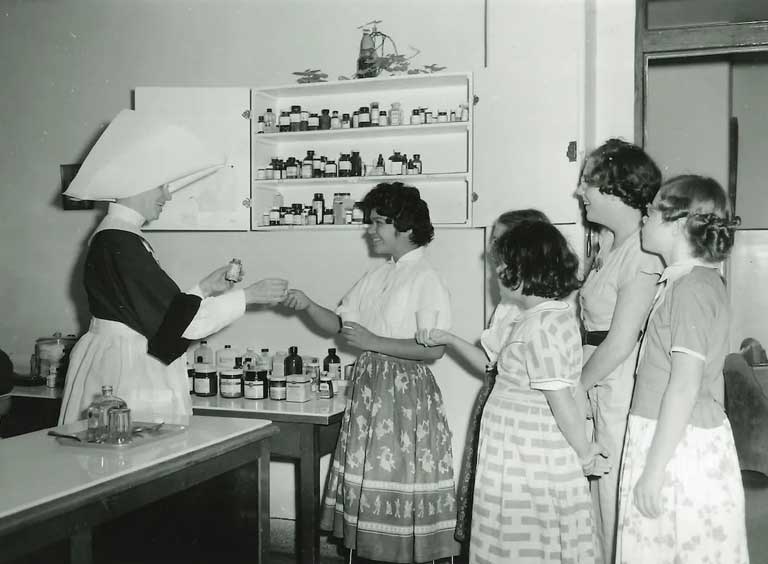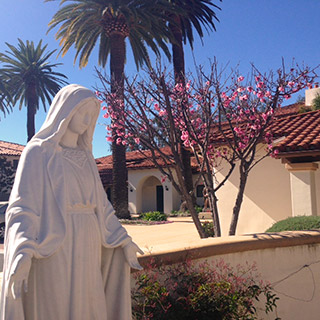
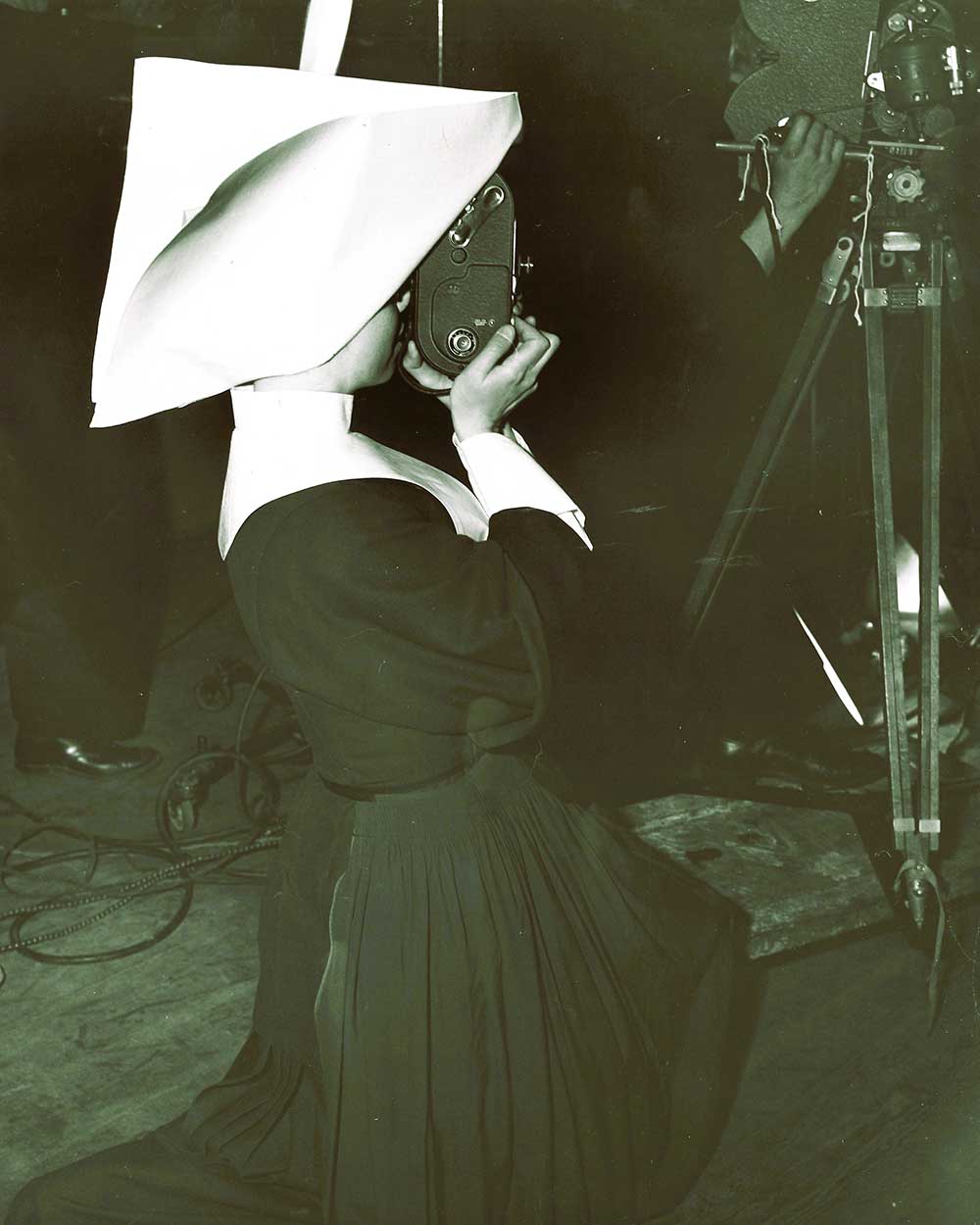
Our Mission is to preserve for posterity the historical record of St. Vincent’s and the Daughters of Charity in Santa Barbara, California.
Our Goal is to arrange and describe our historical documents according to professional standards so that they may be available to present and future generations seeking information regarding their family members who were in residence here at St. Vincent’s.
Our Goal is also to share with others the Legacy of the Daughters of Charity in Santa Barbara, especially with those who share this Legacy – our Associates and local communities.
Former students of St. Vincent’s School and their family members, as well as researchers, scholars, and members of the public may submit an archival inquiry by contacting the Vice President of Mission and Archives, Sister Arthur Gordon, DC by email: srgordon@sv-sb.org or phone: (805) 683-6381 ext. 101, and submitting the relevant St. Vincent’s archival inquiry form available for download below.

This project was and is supported by California Revealed and administered in California by the State Librarian. The program is made possible by funding from the U.S. Institute of Museum and Library Services under the provisions of the Library Services and Technology Act.
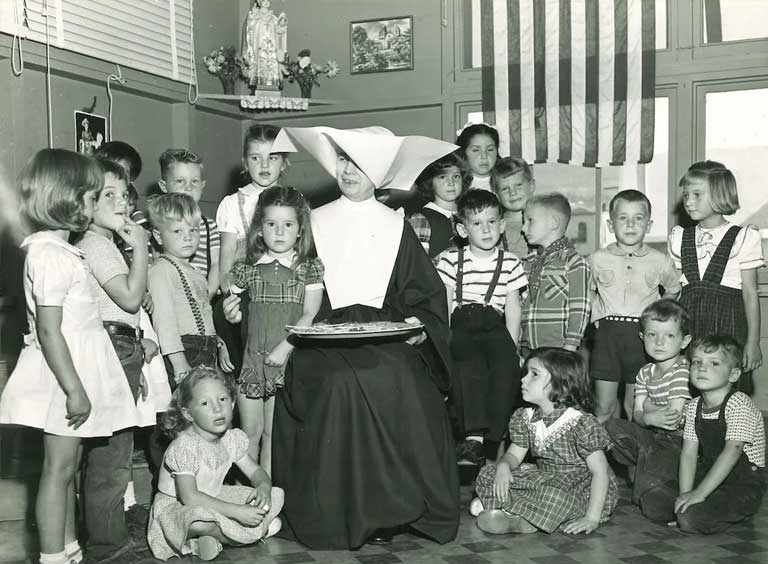
In 1918, California’s first day nursery opened in Santa Barbara.
Lack of affordable childcare has been a chronic problem in Santa Barbara since the early 20th century. The city, however, may look with pride to its past when trying to address the problem in the future. The opening of St. Vincent’s Day Nursery in 1918, the first such facility in the state of California, was an important milestone in making the area a welcoming place for working parents and their children.
The Daughters of Charity at St. Vincent’s helped the whole city.
The COVID-19 pandemic may loom less menacing now than it did two years ago, but we are not out of the woods yet. As of this writing, new cases are still being registered each week in Santa Barbara, on top of growing reports of influenza and respiratory syncytial virus (RSV). Furthermore, in the race to distribute vaccines, enforce public health mandates, and sort through the political clamor, we have yet to fully take stock of the devastating toll the pandemic brought on our communities.

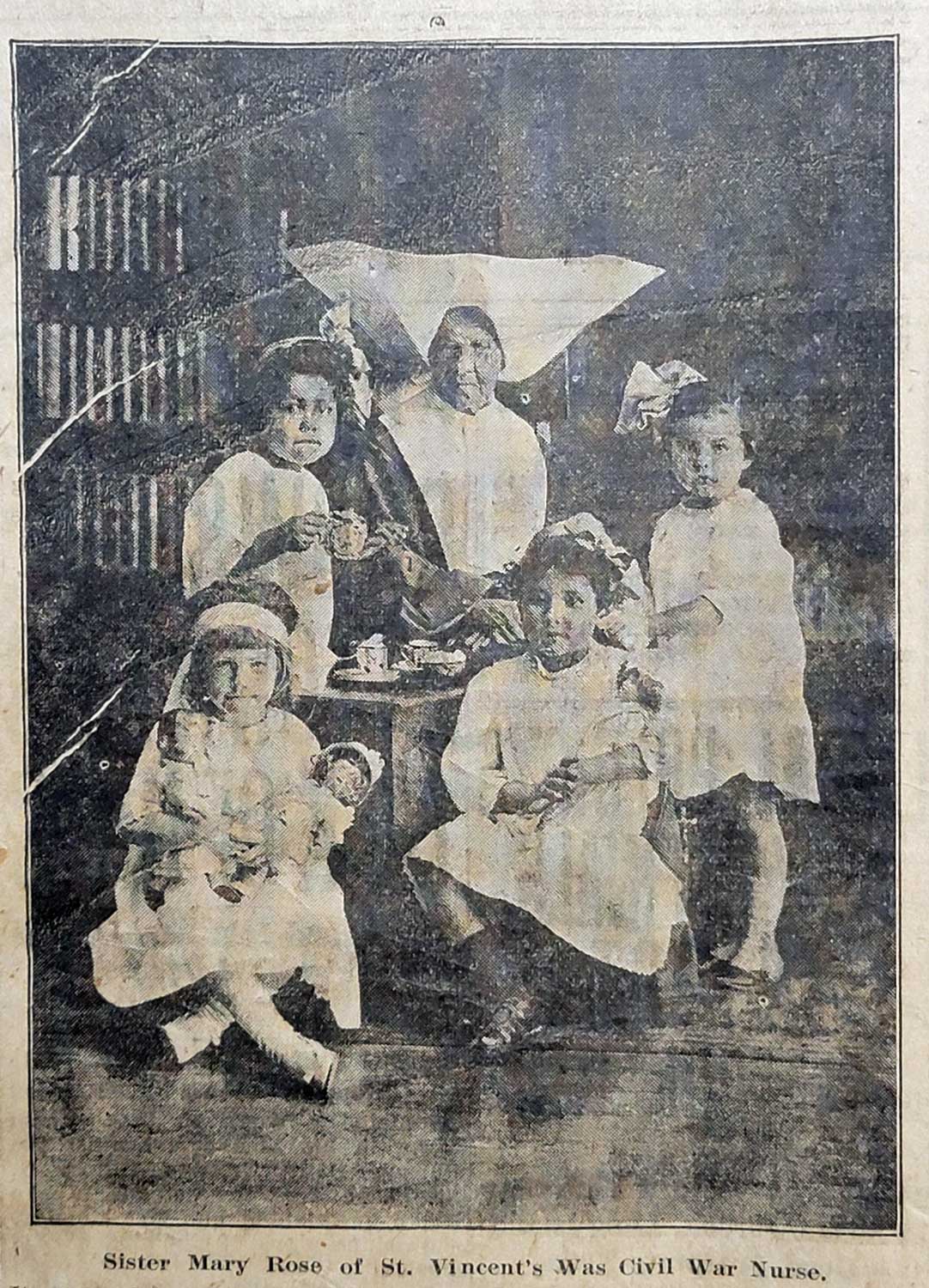
The Legacy of Sister Mary Rose Brady
The connections between Santa Barbara and the history of the Civil War aren’t well-known. Although the state of California played a major role in ensuring the Union’s decisive victory, the city was far removed from the brunt of the war’s violence. Still, the people of Santa Barbara made several notable contributions to the war effort. Among them was the formation of volunteer Santa Barbara Company C of the First Battalion of the Native California Cavalry under the leadership of Antonio María de la Guerra in 1864. Less prominent in the lore of the conflict was the dangerous and selfless work of the Civil War nurses, and among these nurses was a Daughter of Charity and Santa Barbara resident of 39 years: Sister Mary Rose Brady.
S.B.’s early history as a wellness destination spurred the need for inpatient care.
In the latter half of the 19th century Santa Barbara became a mecca for people suffering from chronic respiratory illnesses. The publication of books, such as Charles Nordhoff’s California: For Health, Pleasure, and Residence in 1873, played an important role in popularizing Santa Barbara as the ultimate destination for healing and natural palliation in the American imagination. The rumors of the region’s rejuvenating climate converged with technological advances of the time. The completion of Stearns Wharf in 1872 and the building of a railroad connection in 1877 opened Santa Barbara to settlement, tourism, and commerce on a much bigger scale. Lured by the promises of salubrious weather and inspired by the hearsay accounts of extraordinary recoveries from “consumption and the diseases of the throat and lungs,” thousands settled in the Santa Barbara area.
